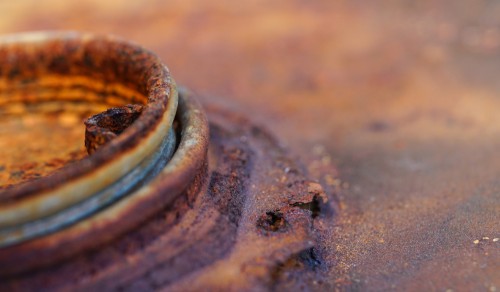Oil Tank Corrosion and Equipment Failures
Corrosion is a common problem in all steel tanks used for the storage of lubricating, Hydraulic and Motor Oils in addition to other similar products used in larger quantities. If left unchecked corrosion can lead to contamination through water build up particularly in tanks with internal ribs and in the worst-case scenario leaking oil tanks to a greater or lesser extent depending on the nature and size of the corrosion.
Water Ingress
At first glance it would appear impossible for water to enter a steel storage tank; however, the filling and emptying of tanks results in large volumes of air entering and leaving via breathers which will contain moisture at various levels depending on the time of year. When moist air is drawn into a tank, changes in air temperature can cause very small amounts of condensate to build over time. Whilst these single occurrences may only be extremely small, over time these can build into appreciable volumes.
Whilst motor oils contain detergents and dispersants to absorb water, hydraulic oils are designed to displace water to protect hydraulic systems. Hydraulic oils are hygroscopic and will absorb water, the presence of additives keeps these levels below the saturation point which varies with temperature and humidity which in turn affects the amount of free water displaced.
Corrosion
In the presence of water and oxygen steel tanks are prone to corrosion. The degree to which they corrode depends on many factors from the product formulation, temperature, and the amount of water present. In the case of hydraulic oils, additives act at the surface together with a physical barrier created by the base mineral oil, whereas motor oils are designed to absorb and hold water within the formulation.
Corrosion in tank headspaces will occur especially in storage tanks which are seldom full. If oils are kept at low levels, any oil film which has formed on surfaces will drain leaving an ultra-thin film where the asperities of the steel surface protrude into the void. These microscopic surface phenomena provide a vast surface area which will react with any moisture and air within the headspace. Although these reactions are very slow, over time these can lead to an ever-thicker coasting of rust.
Sludge
Wherever moisture collects in the presence of a biological substrate some form of growth will occur. Bacteria and fungi from the atmosphere find there way into storage vessels through breathers and naturally fall onto surfaces where in the presence of water and oxygen will multiply. The degree to which they flourish depends on the amount of water and oxygen present so by eliminating one you can control their growth.
As tanks age they will collect a variety of contaminants. These can include rust, water, biological growths, displaced additives, solids such as silicates from the atmosphere all of which agglomerate into a sludge at the bottom of the tank. Regular cleaning and tank inspections will ensure these do not build into problematic volumes which can contaminate lines, hoses and filters used to fill equipment.
Equipment failures
Water entering equipment designed to run on oil will lead to a multitude of issues. Hydraulic oils run under pressure so small droplets of water have serious effects on lubrication. Water within hydraulic systems with as little as 0.1% can reduce bearing life by ~50% therefore its control is paramount. Additives particularly those based upon Zinc can react in the presence of moisture leading to filter blocking and the loss of wear protection.
Water within motor oils can lead to deposits and corrosion. White deposits often referred to as ‘mayonnaise’ are the result of motor oil additives holding on to water through the dispersant and detergent additives present.
Tank debris and contaminants caused by corrosion will lead to filter blocking, abrasive wear, reduced oil life, poor response, and ultimately unplanned downtimes to rectify and repair.
Conclusion
Tank management is just as important as the contents. Ensure tanks are of the correct size and can be kept at optimised levels. Whilst larger tanks may give flexibility, if they remain half full the headspace will not be as protected and may lead to corrosion over time. Tanks should be seated correctly and held within bunded areas capable of holding 110% of the volume.
Changing grades within storage tanks is possible but should only be undertaken in conjunction with your oil supplier. Assumptions made on compatibility can produce oil mixtures which may be detrimental to the final application.


